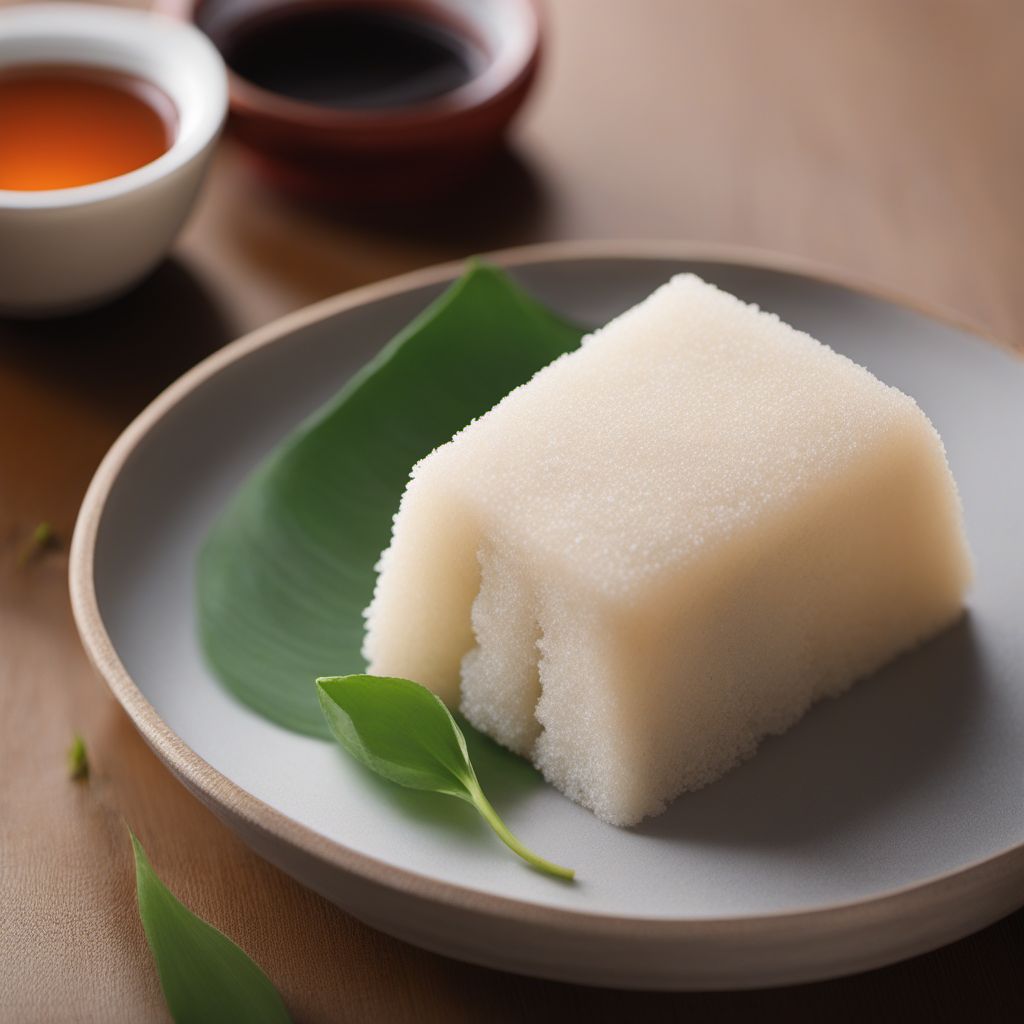
Recipe
Kagami Mochi - Traditional Japanese New Year's Rice Cake
Glistening Jewel: A Delightful Twist on Traditional Japanese New Year's Rice Cake
4.2 out of 5
Kagami Mochi is a classic Japanese dish that holds great significance during the New Year's celebrations. This sweet and chewy rice cake symbolizes good luck and prosperity for the coming year.
Metadata
Preparation time
30 minutes
Cooking time
20 minutes
Total time
50 minutes
Yields
4 servings
Preparation difficulty
Medium
Suitable for
Vegetarian, Vegan (if daidai fruit is used), Gluten-free, Nut-free, Dairy-free
Allergens
N/A
Not suitable for
Paleo, Keto, Low-carb, High-protein, High-fat
Ingredients
-
2 cups (400g) glutinous rice flour 2 cups (400g) glutinous rice flour
-
1 1/4 cups (300ml) water 1 1/4 cups (300ml) water
-
1 daidai fruit (or substitute with tangerine or orange) 1 daidai fruit (or substitute with tangerine or orange)
-
Cornstarch, for dusting Cornstarch, for dusting
Nutrition
- Calories (kcal / KJ): 180 kcal / 753 KJ
- Fat (total, saturated): 0g, 0g
- Carbohydrates (total, sugars): 42g, 0g
- Protein: 3g
- Fiber: 1g
- Salt: 0g
Preparation
-
1.In a large bowl, combine the glutinous rice flour and water. Mix well until a smooth dough forms.
-
2.Divide the dough into two portions, one slightly larger than the other.
-
3.Steam the larger portion of dough for 20 minutes until cooked and elastic.
-
4.Remove the steamed dough from the heat and let it cool slightly.
-
5.Dust a clean surface with cornstarch and transfer the steamed dough onto it.
-
6.Knead the dough gently until it becomes smooth and pliable.
-
7.Shape the dough into a round disc, about 1 inch thick and 6 inches in diameter.
-
8.Repeat steps 3-7 with the smaller portion of dough.
-
9.Place the larger mochi disc on a serving plate.
-
10.Dust the mochi disc with cornstarch to prevent sticking.
-
11.Carefully place the smaller mochi disc on top of the larger one.
-
12.Dust the smaller mochi disc with cornstarch as well.
-
13.Wash and dry the daidai fruit (or substitute) and place it on top of the smaller mochi disc.
-
14.Kagami Mochi is now ready to be served and enjoyed!
Treat your ingredients with care...
- Glutinous rice flour — Make sure to use glutinous rice flour specifically, as regular rice flour will not yield the desired sticky texture.
- Daidai fruit — If daidai fruit is not available, you can substitute it with a tangerine or orange. The fruit adds a citrusy flavor and a vibrant touch to the dish.
Tips & Tricks
- To prevent the mochi from sticking to your hands while kneading, lightly coat your hands with cornstarch.
- If the mochi becomes too sticky to handle, dust it with more cornstarch.
- Serve Kagami Mochi on a decorative plate or tray to enhance its visual appeal.
- To store leftovers, wrap the Kagami Mochi tightly in plastic wrap and refrigerate. Consume within 2-3 days.
- For added flavor, you can lightly toast the mochi discs before assembling.
Serving advice
Kagami Mochi is traditionally served during Japanese New Year celebrations. It is often displayed as a centerpiece on the family altar or in the living room to bring good luck and prosperity. To serve, carefully cut the mochi into smaller pieces using a sharp knife and enjoy its delightful texture and subtle sweetness.
Presentation advice
To enhance the presentation of Kagami Mochi, place it on a beautiful Japanese lacquerware plate or a decorative platter. You can also add some fresh greenery or edible flowers around the dish to create an elegant and festive look.
More recipes...
For Kagami mochi
For Japanese cuisine » Browse all
More Japanese cuisine dishes » Browse all

Kappamaki
Cucumber roll
Kappamaki is a traditional Japanese dish that is made with sushi rice and cucumber. It is a simple and refreshing dish that is perfect for a light...

Takoraisu
Taco Rice
Takoraisu is a popular Japanese dish that consists of rice topped with seasoned ground beef and vegetables. The dish is typically seasoned with...

Tsukimi soba
Tsukimi Soba
Tsukimi soba is a Japanese dish that consists of soba noodles served in a hot broth with a raw egg on top. The dish is typically enjoyed during...






